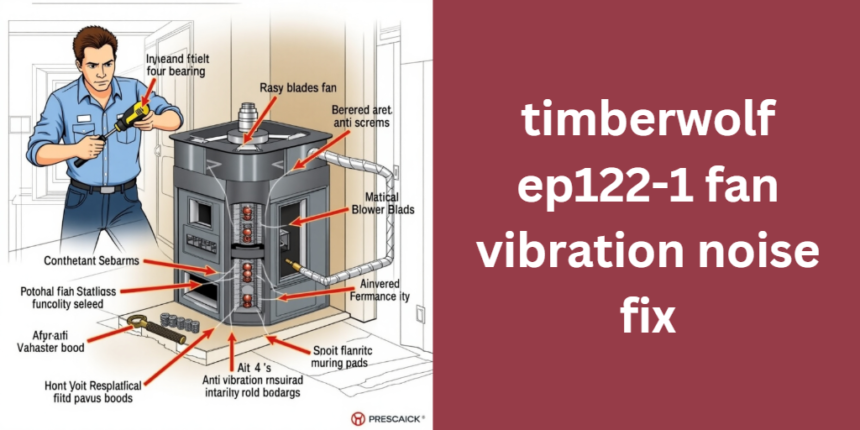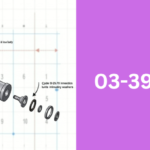If you are experiencing unusual noises and vibrations from your Timberwolf unit, you are not alone. In this guide, we dive deep into how you can resolve the issues that often lead to fan vibration noise.
Whether you are a seasoned DIY enthusiast or a homeowner seeking an effective solution, this comprehensive article will walk you through each step to achieve a timberwolf ep122-1 fan vibration noise fix. We cover everything from understanding the system to troubleshooting and maintenance, ensuring that you gain the knowledge needed to tackle the problem head-on.
Understanding the Timberwolf Blower System
To effectively address the timberwolf ep122-1 fan vibration noise fix, it is crucial to understand how the blower system operates. The blower in your Timberwolf unit is designed to circulate air, ensuring optimal combustion and heat distribution. However, factors such as dust accumulation, wear on mechanical components, and improper installation can lead to increased vibrations.
The blower system is a delicate balance of motor function, fan blade alignment, and secure mounting. Any disruption in this harmony can cause the fan to produce excessive noise. In this section, we explain the main components, including the motor, bearings, and fan blades, and how each contributes to overall performance.
Diagnosing the Fan Vibration Issue
Before you jump into repairs, proper diagnosis is essential. A methodical approach can help you identify whether the problem stems from loose components, dust buildup, worn-out bearings, or other underlying issues.
Start by observing the noise during different operating conditions. Is the vibration constant, or does it increase at specific times? Carefully inspect the mounting screws and connections, as loose fixtures are often the simplest culprit. Use a checklist of tools such as a screwdriver, a cleaning brush, and a set of lubricants to ensure that every component is checked.
Diagnostic Checklist
- Inspect Mounting and Screws: Verify if all screws and mounts are secure.
- Check for Debris: Look for dust, ash, or pet hair that might cause imbalance.
- Examine Bearings: Listen for unusual sounds that indicate bearing wear.
- Assess Fan Blades: Ensure that the blades are not bent or unbalanced.
- Monitor Motor Performance: Evaluate whether the motor is overheating or showing signs of strain.
Following these steps will help you narrow down the cause of the issue and prepare you for an effective timberwolf ep122-1 fan vibration noise fix.
Common Causes of Fan Vibration and Noise
Understanding the root causes is vital to resolving the problem. Several factors contribute to fan vibration and noise, and each has its solution.
Loose Mounts and Screws
Over time, the vibrations themselves can cause mounting screws to loosen. This issue is simple to fix but can cause significant noise if left unaddressed. Tightening all connections is a good first step.
Dust, Debris, and Ash Buildup
Accumulated dust and debris can cause the blower to become unbalanced, which in turn increases vibration. Regular cleaning is essential to maintain optimal performance.
Worn Bearings and Bushings
Bearings that have become worn or dry can lead to excessive noise. Sometimes a quick lubrication might suffice; other times, replacing the bearings is necessary to achieve a long-term timberwolf ep122-1 fan vibration noise fix.
Unbalanced Fan Blades
Fan blades that have become unbalanced or bent create a wobbling effect that significantly amplifies the noise. Adjusting or replacing the blades can often resolve this issue.
Motor Overheating or Defects
An overheating or malfunctioning motor can also produce noise and vibration. If other fixes do not alleviate the problem, a closer inspection of the motor might be necessary.
Below is a table summarizing common issues and their corresponding solutions:
| Issue | Potential Solution | Frequency of Check |
|---|---|---|
| Loose mounting screws | Tighten screws; consider anti-vibration washers | Every 3-6 months |
| Dust and debris buildup | Clean the blower thoroughly | Monthly during heavy use |
| Worn bearings or bushings | Lubricate or replace bearings | Annually or as needed |
| Unbalanced fan blades | Inspect, adjust, or replace fan blades | Every 6 months |
| Motor overheating or defects | Check motor function; consult a professional if needed | As symptoms appear |
Step-by-Step Solutions to Fix Fan Vibration Noise
Implementing the proper steps will ensure a lasting timberwolf ep122-1 fan vibration noise fix. Here we detail the process in clear, easy-to-follow steps.
Tightening the Fan and Blower Assembly
Begin by ensuring that all mounting screws and brackets are secure. Carefully remove any covers to access the fan assembly. Tighten each screw gently, making sure not to overtighten, which could strip the threads or damage the components. Some users find that replacing old screws with anti-vibration washers can significantly reduce further movement.
Cleaning the Blower for Optimal Performance
A buildup of dust and debris can unbalance the blower. Remove the blower carefully, and use a soft brush along with a vacuum cleaner to clean the fan blades, motor housing, and surrounding areas. It is important to clean the blower regularly to prevent the recurrence of vibration issues.
Lubricating and Replacing Fan Bearings
When the noise is due to worn bearings, a decision must be made between lubricating and outright replacement. For minor wear, applying a high-temperature lubricant to the bearings might resolve the issue temporarily. However, if the noise persists, replacing the bearings with new ones is advisable. This process involves removing the old bearings, cleaning the area thoroughly, and installing the new components securely.
Balancing the Blower Fan Blades
Inspect each fan blade for signs of damage or imbalance. If you notice that one blade is misaligned, adjust its position carefully. Sometimes, a slight bend can cause significant noise, and rebalancing the blades can restore smooth operation. In cases where rebalancing is not possible, consider replacing the affected blades.
Installing Anti-Vibration Pads and Noise Dampeners
To further reduce noise, anti-vibration pads or shims can be inserted between the blower assembly and the mounting surface. These pads absorb vibrations and prevent them from resonating through the structure. For a DIY solution, consider using high-density rubber or commercially available anti-vibration mounts.
Upgrading to a Quieter, High-Quality Blower
If the timberwolf ep122-1 fan vibration noise fix does not yield satisfactory results, upgrading to a newer, quieter blower model may be the solution. Research aftermarket options that offer enhanced noise reduction features and improved mounting systems. Weigh the benefits against the costs and decide if an upgrade would be a more efficient long-term solution.
Preventative Maintenance to Avoid Future Issues
Regular maintenance is key to preventing future issues. It is not enough to simply fix the noise once; understanding how to maintain the system will save time and money in the long run. Here are some best practices:
- Routine Cleaning: Schedule monthly cleaning sessions to remove dust and debris.
- Periodic Inspection: Check the mounting screws, bearings, and fan blades every few months.
- Seasonal Maintenance: In periods of heavy use, such as winter, increase the frequency of inspections.
- Lubrication Schedule: Follow a regular lubrication schedule for moving parts to avoid wear and tear.
Incorporating these practices into your regular maintenance routine will help ensure a lasting timberwolf ep122-1 fan vibration noise fix.
Troubleshooting Persistent Issues
If you have followed all the above steps and the noise still persists, it may be time to seek professional help. Persistent issues could indicate more serious problems, such as motor defects or structural issues within the unit. In such cases, consulting with a certified technician can provide additional insight and ensure that the problem is resolved safely.
FAQ
Q: Why does my Timberwolf fan get louder over time?
A: Over time, factors such as loose mounting screws, dust buildup, and worn bearings can contribute to increased vibration and noise. Regular maintenance is key to preventing these issues.
Q: Can I use third-party fan blowers for this model?
A: While some third-party options are available, it is important to ensure compatibility with your Timberwolf unit. Always consult the manufacturer’s guidelines before making any replacements.
Q: How often should I perform maintenance on my blower?
A: It is recommended to inspect and clean the blower monthly, with a more thorough inspection and lubrication every three to six months.
Q: What should I do if the motor seems to be the issue?
A: If you suspect that the motor is faulty, it is advisable to consult a professional technician, as motor issues can be complex and may require specialized tools or expertise.
Conclusion
In summary, achieving a timberwolf ep122-1 fan vibration noise fix involves understanding your unit’s blower system, diagnosing the root cause of the noise, and methodically addressing each issue through tightening, cleaning, lubricating, and balancing. With regular maintenance and careful troubleshooting, you can significantly reduce the noise and ensure optimal performance. By following this guide, you can restore peace to your home and extend the lifespan of your Timberwolf unit.
This article provided a detailed roadmap from initial diagnosis to final troubleshooting, ensuring that you have all the information needed for a successful DIY repair and maintenance routine. Regular upkeep and attention to detail are the keys to keeping your fan running quietly and efficiently.
Other Posts Like timberwolf ep122-1 fan vibration noise fix
The Ultimate Guide to Christmas Songwriting: History, Techniques, and Inspiration
Comprehensive Guide to News LoveLolaBlog
The Ultimate Guide to the Perrinelle Dumay Amphibious Heavy Tank











